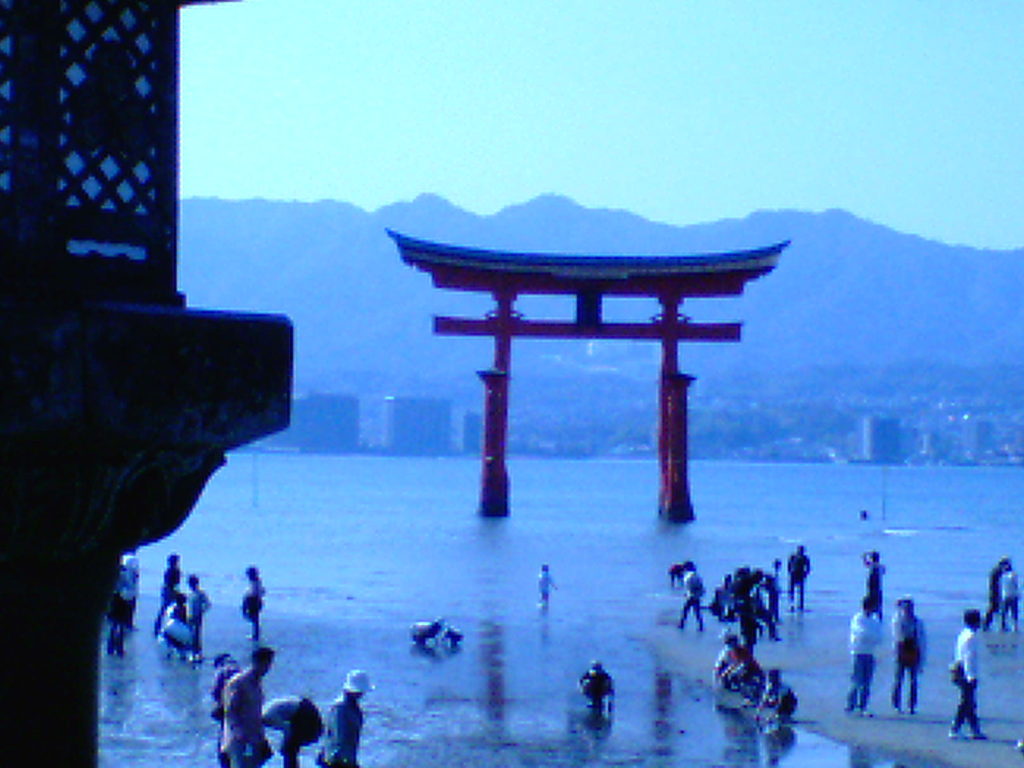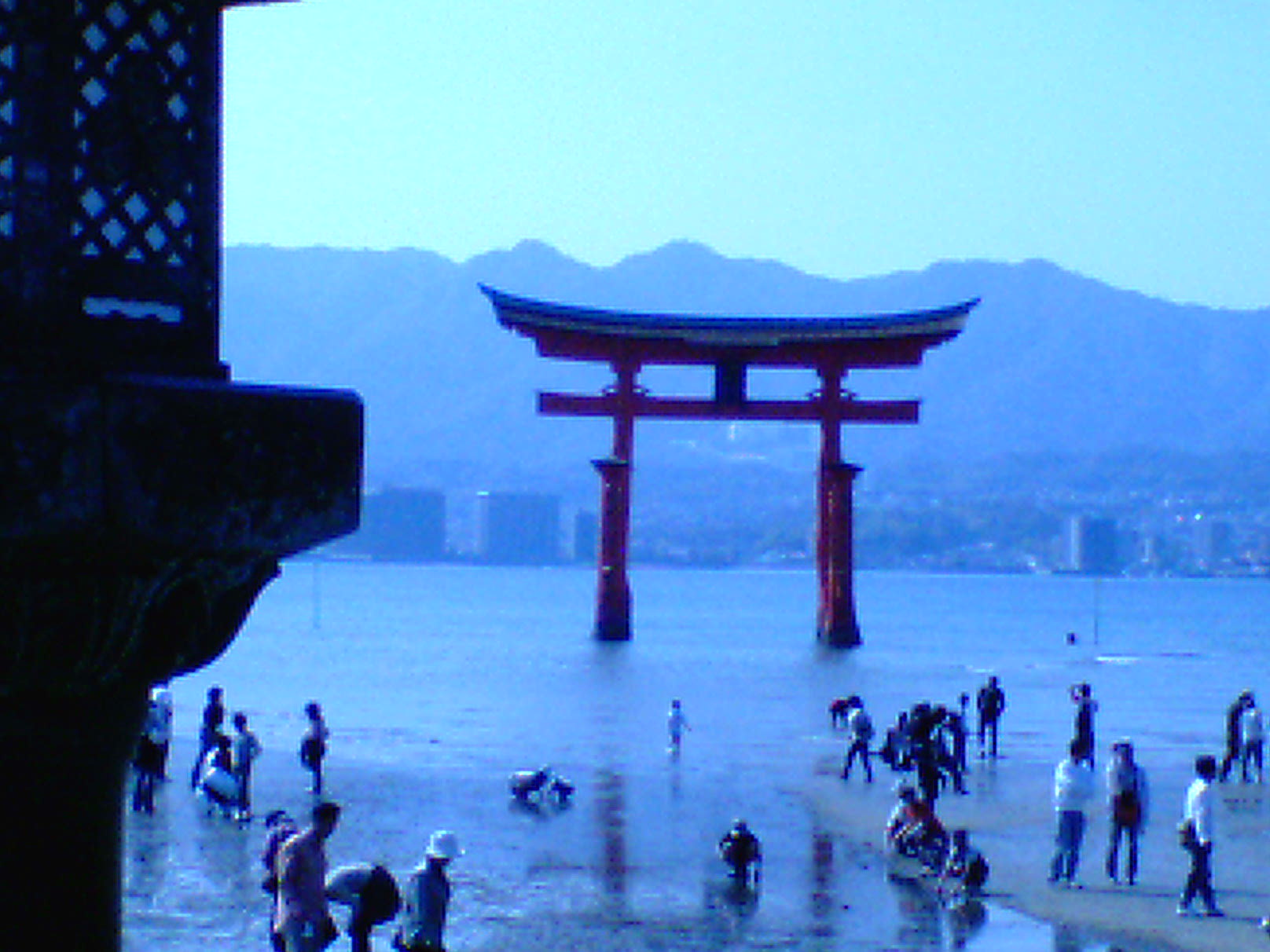日本三景のひとつ厳島(宮島)にある世界遺産・国宝嚴島神社

御祭神 Enshrined Deities
市杵島姫命(いちきしまひめのみこと)Ichikishimahime-no-mikoto
田心姫命(たごりひめのみこと)Tagorihime-no-mikoto
湍津姫命(たぎつひめのみこと)Tagitsuhime-no-mikoto
御由緒 History
当社の御祭神は天照大御神(あまてらすおおみかみ)と素盞鳴尊(すさのおのみこと)が高天原(たかまのはら)で剣玉の御誓(うけい)をされた時に御出現になった神々で、御皇室の安泰や国家鎮護、また海上の守護神として古くから崇信を受けられた。
宮島に御鎮座地を探されるにあたり、この島を治める佐伯鞍職(さえきのくらもと)に神勅が下った。鞍職は大神様が高天原から連れてきた神鴉(ごからす)の先導のもと、御祭神と共に島の浦々を巡り、海水の差し引きする現在地を選んで御社殿を建てたのは、推古天皇御即位の年(593年)であると伝えられる。
その後安芸守となった平清盛(たいらのきよもり)が当社を篤く崇敬し、仁安3年(1168年)に寝殿造の様式を取り入れた御社殿に修造した。清盛の官位が上がるにつれ平家一門のみならず、承安4年(1174年)に、後白河(ごしらかわ)法皇の御幸(ごこう)、治承4年(1180)3月と9月に高倉上皇の御幸(ごこう)があるなど、多くの皇族・貴族が参詣され、都の文化がもたらされた。
当社に対する崇敬は、平家から源氏の世になっても変わることなく、又時代が移り室町時代の足利尊氏や義満、戦国時代の大内家、毛利家などからも崇拝された。
松島・天橋立と並び日本三景「安芸の宮島」として知られ、平成8年(1996年)にはユネスコの世界文化遺産に登録され現在にいたる。
御由緒 拝観 嚴島神社【公式サイト】国宝・世界文化遺産 (itsukushimajinja.jp)
The three deities of Itsukushima Shrine were born when Amaterasu Ōmikami (goddess of the sun) and her brother Susanoo-no-mikoto made a pledge on the Celestial Plain, using a jewel and a sword. Since ancient times, they have been revered and worshipped as deities that ensure the well-being of the imperial family, guard the nation and protect seafarers.
When the deities were looking for the best location to settle, Saeki no Kuramoto, who governed the island, received an oracle. Led by a divine crow from the Celestial Plain, he sailed around the island with the deities and decided to build a shrine at this place where the tide ebbs and flows. According to an ancient record, this took place in 593, the year Empress Suiko ascended the throne.
In 1168, Taira no Kiyomori, who worshipped at the shrine, rebuilt it in the shinden-zukuri style, an architectural style in which residences of the nobility were built in those days. As Kiyomori assumed higher posts in the imperial court, not only the Taira clan but many other eminent people also visited the shrine, including members of the imperial family and aristocrats, such as former Emperor Goshirakawa, who had joined a Buddhist order, in 1174 and retired Emperor Takakura in March and September of 1180. They brought with them the culture of Kyoto.
After the Taira regime, the shrine was revered and patronized by the ruling Genji clan, then by Ashikaga Takauji (1305-1358) and Ashikaga Yoshimitsu (1358-1408) and other shoguns of the Muromachi period, and by the Ōuchi and Mōri clans during the Warring States period.
“Miyajima of Aki Province” became well known as one of the three most scenic places in Japan, along with Matsushima and Amanohashidate. In 1996, Itsukushima Shrine was registered as a UNESCO World Cultural Heritage site.
History Itsukushima Shrine (itsukushimajinja.jp)



コメント